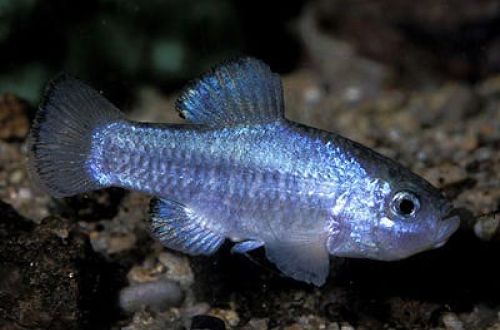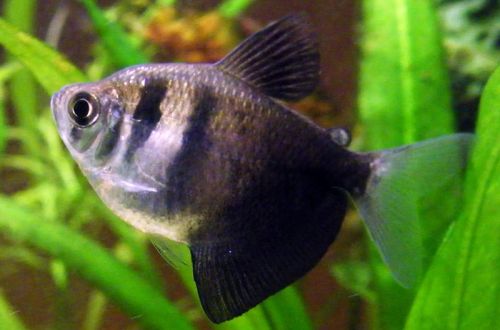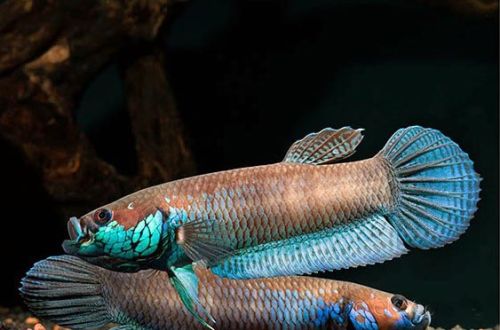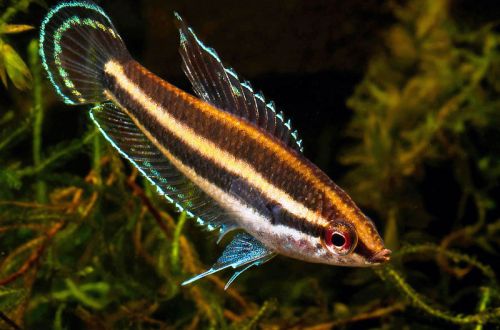
Desert tooth carp
The desert carp, scientific name Cyprinodon macularius, belongs to the Cyprinodontidae family. It belongs to one of the oldest types of bone fish living at the present time, a kind of “living fossil”. It is distinguished by incredible endurance, able to successfully adapt to conditions that are deadly for the vast majority of fish. Withstands temperatures of 45°C and salinity three times that of the ocean!

Considered an “annual” species, it comes from the drying up reservoirs of the desert areas of North America. The life cycle lasts only a few months, until the sun dries up the reservoir, with the advent of the wet season, a new generation of fish appears. However? at home, the fish will live for more than 2 years.
During the winter months, when temperatures drop below 21°C, Desert Toothfish hibernate by burrowing into the muddy bottom. In the spring, with the advent of warm weather, they become active again and the breeding season begins. Males acquire a blue luminescent coloration and aggressively defend their territory.
Contents
Habitat
The homeland of this species are swamps, lakes and other reservoirs of the desert areas of the “Wild West” of the United States in the region of the lower reaches of the Colorado River in the territory of the modern states of California, Arizona, Nevada, as well as the northern part of Mexico. However? in recent years have become widespread throughout America – are used to control mosquitoes.
This is a very old species, and there is archaeological evidence that Toothbills lived in a series of interconnected prehistoric desert lakes. About 10 thousand years ago, during the Pleistocene period, after the end of the last ice age, the lakes began to dry up, turning into small reservoirs, isolated from each other. There are currently 13 known species, and several subspecies. Many of them are found only in one particular body of water, which makes them endemic to that area.
In nature, they can live in extreme conditions that are unacceptable for most species of fish. They feed on larvae of mosquitoes and other insects, vegetation, snails.
Description
The body is short, rather plump, the head is large. The structure of the mouth makes it easy to capture prey from the surface. The fins are large, rounded, the dorsal fin is located closer to the back of the body. The coloration is unremarkable – olive in color with several dark vertical stripes, but during the spawning period, the male changes noticeably, becoming iridescent blue.
Food
They belong to omnivorous species, they will gladly accept all types of dry (flakes, granules), frozen and live food (bloodworm, mosquito larvae, tubifex, brine shrimp for young individuals).
Maintenance and care
They come from waters whose conditions are constantly changing, so it is not difficult to keep Desert Toothfish in a home aquarium. A single heater can also provide a consistently high temperature above 25 ° C, but in case of a breakdown, it is recommended to install a backup one, otherwise, when the temperature drops, the fish may go into hibernation. High quality water will provide a high-performance filter and its weekly renewal by a third. The aquarium should be used with a lid to prevent accidental jumping out. Brackish water is required, the concentration of sea salt is 3 teaspoons (without a slide) per 10 liters of water.
Design as close as possible to natural conditions. Fish will appreciate a soft, coarse sand bed that they can burrow into. As a decor, several stones and plants, rooted and floating), adapted to salt, are suitable. Lighting is low to moderate.
Due to the peculiarities of the composition of the water, only representatives of the same group of species are considered as neighbors in the aquarium. Successful keeping is possible with other carp. Females are peaceful, can live in a community of several individuals, males, on the contrary, prefer single keeping, or in a male / female pair, they show territoriality, especially during the breeding season.
Sexual differences
Males are larger than females, the color is bluish, during the spawning period a rich blue color appears.
Breeding / breeding
The breeding season lasts from February to October. Readiness for spawning can be determined by changing the color of the male. During this period, he begins to aggressively defend his territory from everyone except females. After a short courtship ritual, the female lays one egg at a time. In a few hours, several eggs will be laid, for the entire period more than a hundred.
Spawning is recommended to be carried out in a separate tank with identical water conditions as in a common aquarium. To protect the eggs, consider small rooted plants that form a dense canopy and can tolerate brackish water. It is in it that eggs will be laid, when courtship is over and the female stops laying eggs, parents should be immediately removed from the spawning aquarium. Fish tend to eat their offspring.
The fry appear in 6-10 days, the very next day they can be fed with ciliates, as they grow older, switch to Artemia. They grow very quickly, reach full maturity by 2-3 months.
Diseases
They are distinguished by good endurance, health problems arise only in extremely unfavorable conditions. For more information on symptoms and treatments, see the Aquarium Fish Diseases section.





